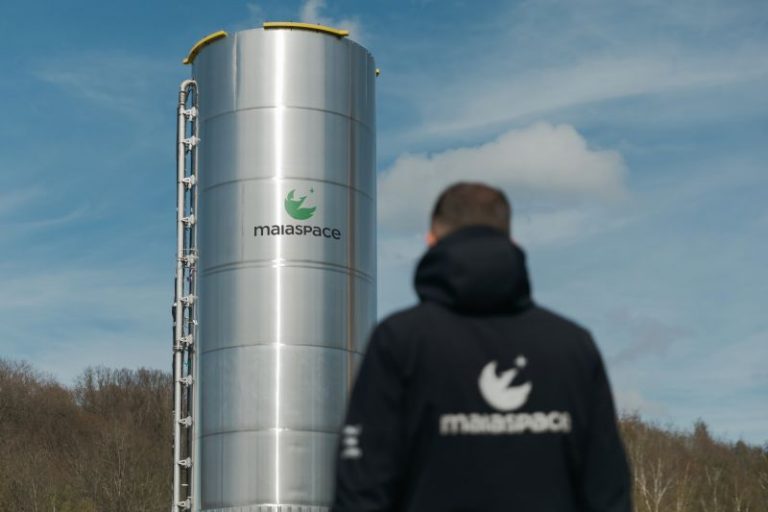Full-scale prototype of Maia’s upper stage back on test zone to undergo new cryogenic fillings
18.06.2024

A couple weeks ago, our full-scale prototype of Maia’s upper stage was back on test zone to undergo new cryogenic fillings, including filling with liquid methane.
Both cryo stages of the Maia launcher will be powered by reusable Prometheus engines fueled with liquid oxygen and liquid bio-methane. But why using methane as rocket propellant? Top 3 reasons are as follows :
👉 Liquid methane as a fuel is a good comprise between extreme performance (reached by the super cold liquid hydrogen) and robustness (usually associated to kerosene), while balancing both parameters is key for a reusable rocket;
👉 Denser and less tricky to handle than hydrogen, methane allows to design more compact and much simpler tanks, reducing the volume and weight of a the main stage, which is of importance when dealing with recovery of a rocket stage at sea ;
👉 When produced locally, i.e. in French Guiana where the Maia rocket will lift-off, from mainly organic waste and crops, bio-methane is one of the rocket propellant with the lowest environmental impacts. In addition, methane-based propellant is expected to cut black carbon emissions compared to kerosene-fuelled rockets, in proportions that remain to be characterized. Black carbon is an environmentally concerning particle especially when emitted in the upper layers of the atmosphere.
MaiaSpace and ONERA – The French Aerospace Lab have initiated and co-funded a PhD thesis project aimed at carefully quantifying such emissions.